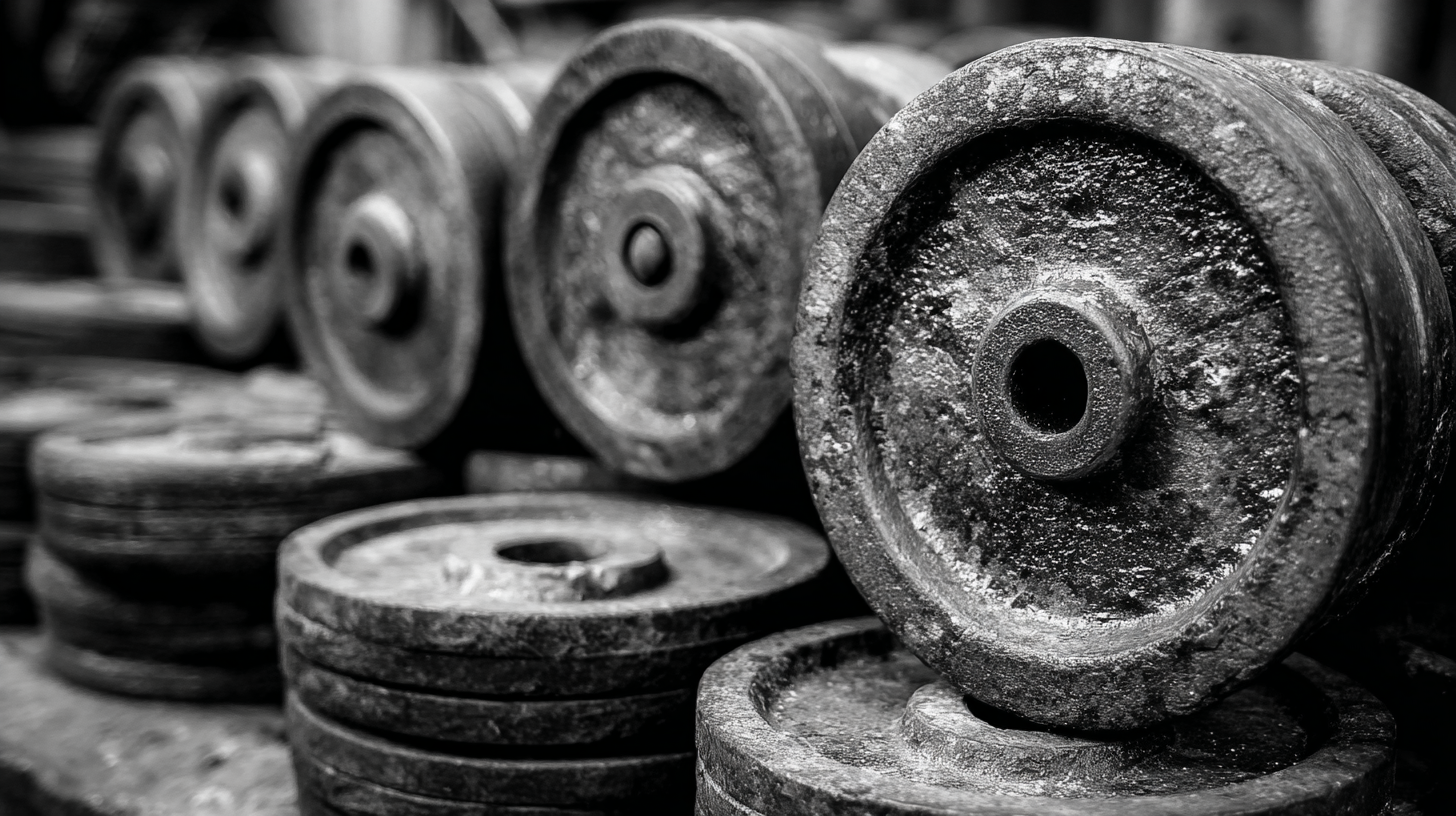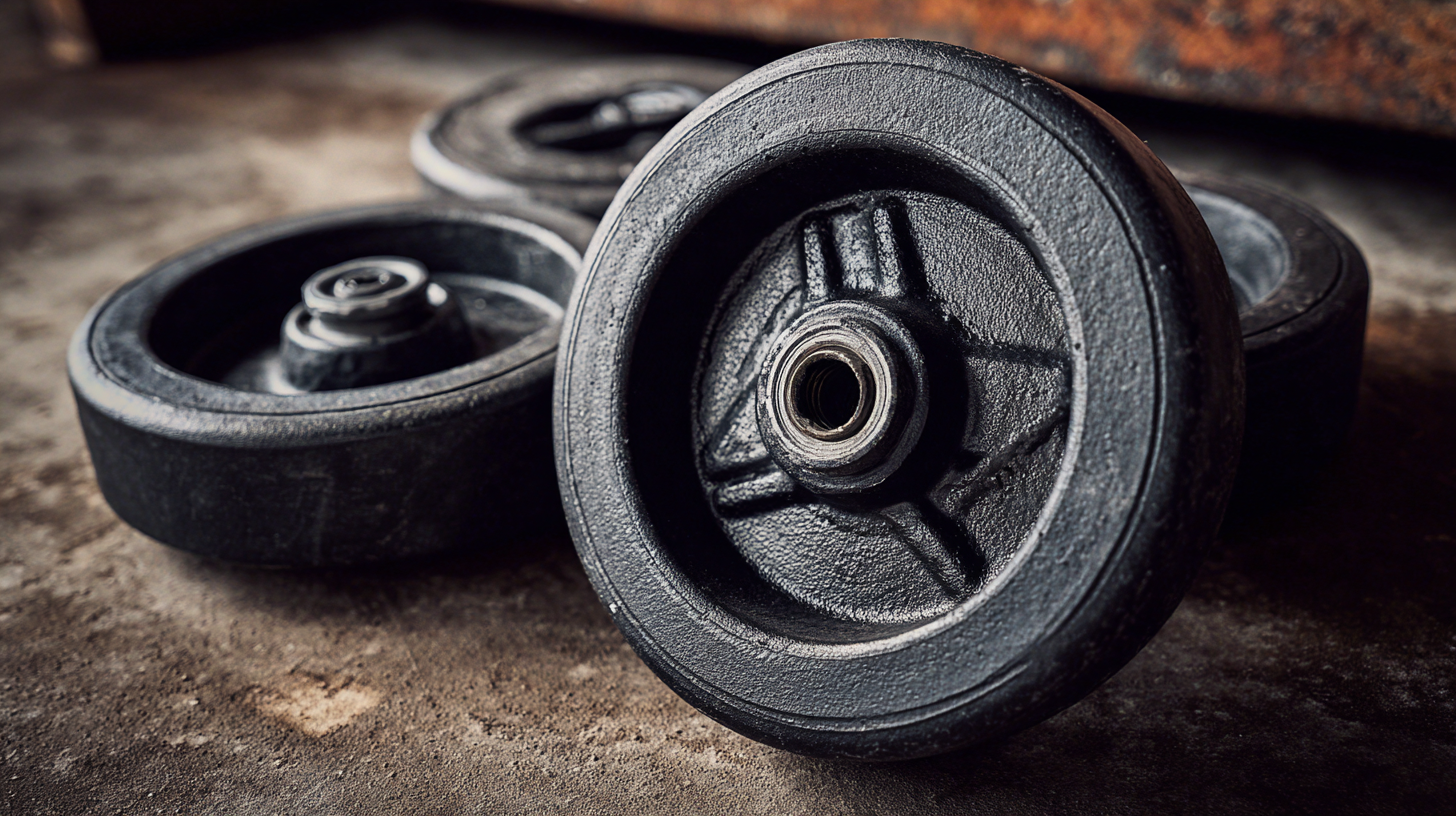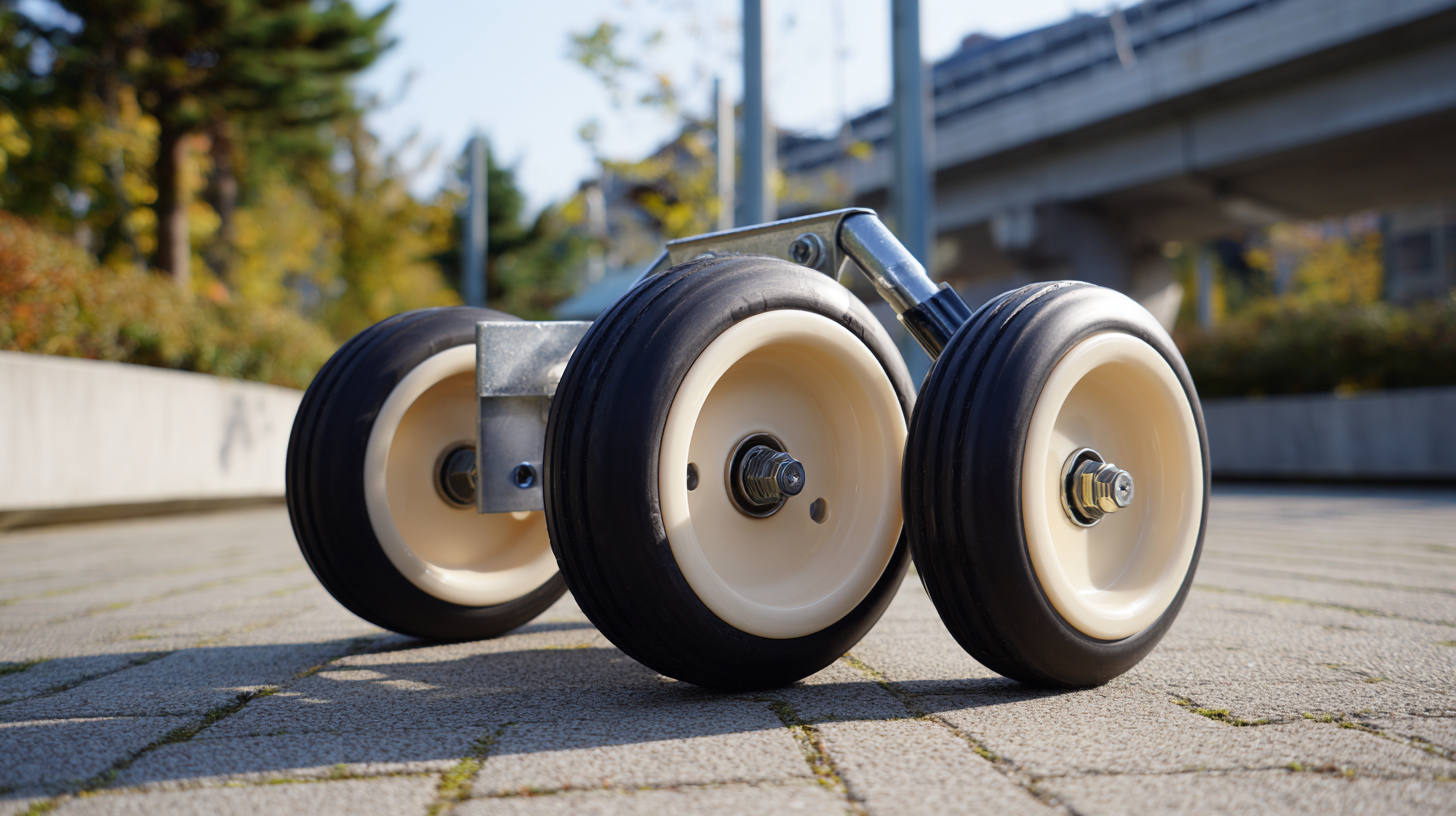
7 Essential Tips for Choosing the Best Heavy Castor Wheels for Your Needs
When it comes to optimizing the efficiency and mobility of heavy-duty equipment, selecting the right heavy castor wheels is crucial. According to industry studies, the global market for caster wheels is projected to grow by over 5% annually, driven by the increasing demand in manufacturing, logistics, and retail sectors. The right heavy castor wheels can enhance load capacity, reduce wear and tear, and improve maneuverability, significantly impacting operational productivity.

However, with countless options available in the market, it can be challenging to identify high-quality products that meet specific needs. Therefore, understanding how to choose the best heavy castor wheels is essential for businesses looking to improve their operations and ensure long-lasting performance.
In this blog, we will discuss seven essential tips to help you choose the perfect heavy castor wheels for your unique requirements, ensuring you make informed decisions from reputable suppliers.
Analyzing Load Capacity: How to Determine the Right Weight Limit for Castor Wheels
When selecting heavy castor wheels, understanding load capacity is paramount.
The weight limit that a castor wheel can handle is determined by the material of the wheel, its diameter, and the type of bearings used.
For instance, wheels made of durable materials like rubber or polyurethane can support heavier loads and provide better traction.
Therefore, it’s crucial to assess the total weight of the items you will be moving and choose wheels that exceed that weight to ensure safety and longevity.
Tip 1: Always consider the surface type where the wheels will roll. Softer wheels work well on uneven surfaces, while harder wheels are better on smooth floors.
This choice affects the wheel's load-bearing capabilities and its longevity.
Tip 2: Don’t overlook the importance of wheel diameter. Larger wheels roll easier over obstacles and distribute weight more effectively.
This can significantly impact both performance and load capacity, so it’s wise to opt for the largest diameter suitable for your application.
By carefully considering load capacity and these essential factors, you'll be well on your way to finding the perfect heavy castor wheels for your needs.
Understanding Wheel Material: The Impact of Polyurethane vs. Rubber on Performance
When selecting heavy castor wheels, understanding the material is crucial for performance and durability. Polyurethane and rubber are two popular options, each offering distinct advantages depending on your application. Polyurethane wheels, for instance, are known for their high load capacity and resistance to wear and tearing. They provide a smooth ride, making them ideal for use on uneven surfaces and reducing the risk of damage to flooring. Furthermore, their ability to withstand harsh chemicals and abrasive materials makes them a preferred choice in industrial settings.
On the other hand, rubber wheels excel in shock absorption, which makes them suitable for applications where noise reduction and smooth maneuverability are priorities. Their softer composition allows for easier movement across various surfaces, providing a cushioned experience that protects products and equipment in transit. However, rubber wheels may wear out more quickly than polyurethane, particularly in heavy-duty scenarios, which emphasizes the importance of matching the wheel material to your specific needs. Ultimately, understanding the differences between these two materials can significantly impact the efficiency and safety of your operations.

Wheel Size Matters: Best Practices for Choosing Diameter for Specific Applications
 When selecting heavy castor wheels for your specific applications, understanding wheel size, particularly diameter, is critical. The diameter of the wheel significantly impacts load capacity, maneuverability, and overall performance. For example, a wheel that is too small may struggle with weight distribution, leading to increased wear and tear. Industry reports suggest that larger diameter wheels tend to roll more easily over obstacles, reducing the effort needed to move heavy loads and maximizing efficiency. It’s recommended to evaluate the ranges of wheel diameters available and match them to the conditions of your workspace to ensure optimal operation.
When selecting heavy castor wheels for your specific applications, understanding wheel size, particularly diameter, is critical. The diameter of the wheel significantly impacts load capacity, maneuverability, and overall performance. For example, a wheel that is too small may struggle with weight distribution, leading to increased wear and tear. Industry reports suggest that larger diameter wheels tend to roll more easily over obstacles, reducing the effort needed to move heavy loads and maximizing efficiency. It’s recommended to evaluate the ranges of wheel diameters available and match them to the conditions of your workspace to ensure optimal operation.
Additionally, the application specifics must be considered when determining the appropriate wheel size. Different environments, such as rough terrains or smooth surfaces, dictate the necessary wheel characteristics. For example, larger wheels can navigate uneven surfaces more effectively, while smaller wheels may be better suited for compact spaces. Research indicates that choosing the right wheel size can lead to reductions in operating costs and improvements in safety and productivity. Therefore, always assess job site demands and alignment with your castor wheel's diameter to achieve the best functional outcome.
The Importance of Swivel vs. Rigid Wheels: Navigating Mobility Needs with Precision
When it comes to selecting the right heavy castor wheels, understanding the distinction between swivel and rigid wheels is essential for optimizing mobility solutions. Swivel wheels provide enhanced maneuverability, making them ideal for scenarios where directional changes are frequent. This is particularly useful in tight spaces such as warehouses or workshops, where navigating around obstacles is a common challenge. Conversely, rigid wheels offer stability and straight-line tracking, which is advantageous for applications requiring consistent movement over long distances. Evaluating your specific mobility needs will help determine the best type of caster for your intended use.
In the growing market of caster wheels, which is projected to reach $12 billion by 2029, it’s vital to consider load capacity and material as well. For heavier loads, medium-duty options (100-300 lbs) enable better support without compromising mobility. Wheel size also plays a crucial role; larger wheels can navigate uneven surfaces more effectively, whereas smaller wheels may suffice in more controlled environments. When choosing your heavy castor wheels, always consider these factors to ensure you make the most effective selection for your operations.
Comparison of Swivel vs. Rigid Castor Wheels for Different Applications
This chart illustrates the suitability of swivel and rigid castor wheels across various applications. The data reflects the effectiveness of each type of wheel in different scenarios, helping you navigate your mobility needs with precision.
Evaluating Brake Systems: 3 Key Features That Enhance Safety and Stability
When selecting heavy castor wheels, evaluating the brake systems is crucial for ensuring safety and stability in various applications. Focus on three key features that can significantly enhance the performance of your wheels: responsiveness, durability, and ease of use.
Responsive brake systems automatically engage when needed, preventing accidental movement and providing peace of mind when transporting heavy loads.
Durability is another vital aspect; the brake components should withstand substantial weight and repetitive use without compromising performance. High-quality materials often translate to better longevity, reducing the need for frequent replacements and maintenance.
Lastly, the ease of use should not be overlooked. Simple and intuitive brake mechanisms allow operators to engage and disengage quickly, ensuring efficiency in settings where time is of the essence.
Additionally, as the automotive brake system market continues to expand, innovations in brake technology are likely to influence the design and functionality of castor wheel systems. By keeping an eye on these developments, users can make informed choices that meet their specific needs and improve operational safety.
